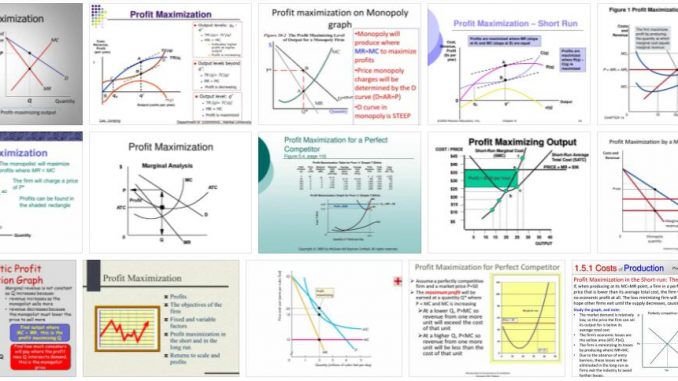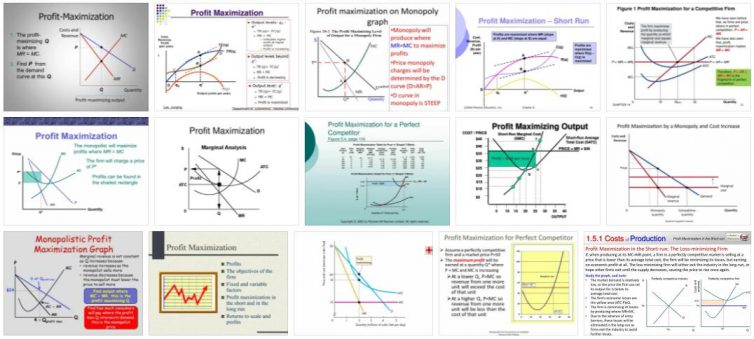
From an economic point of view, profit maximization is one of the central goals of every company. We have put together additional background information on this economic topic for you.
Definition of profit maximization
The profit is the difference between sales revenues and costs incurred (profit = UE costs). Profit is achieved when the total costs are subtracted from the total sales and the result is a positive number. Maximizing profit can therefore be influenced by two factors:
- Increase in sales
- Cost reduction
In concrete terms, this means that companies can try to increase their own sales by increasing the number of items sold or by increasing the price per item. On the other hand, the cost side can be optimized in order to improve the second factor, which also influences the profit.
According to Whicheverhealth, the logical consequence of this definition is that on the one hand, companies strive to increase sales and at the same time must also try to reduce costs.
This approach can lead to conflicting goals if taken to extremes. A simplified example of this is when a sales employee is told that he has to sell more pieces at a more expensive price (= maximum increase in sales) – and at the same time costs are reduced and the employee has to share his office with three other people in the future.
The simple formula of profit maximization reaches its limits where personalities and emotions are taken into account.
Profit maximization in a monopoly
In a typical market in which different providers operate, the price and the quantity offered change practically all the time.
Imagine a simple example :
There are different stores that compete with each other. One of the shops is starting a summer sale, the number of items sold is increasing at his shop and decreasing in other shops. On the other hand, the price per piece is also lower for him. Other stores may follow suit and also change their prices – which in turn affects the items sold by all market participants. You see, such a typical market is characterized by competition and is constantly changing.
The situation is different in a monopoly . The following formula applies here: profit = revenue minus the cost function (G = E – K), because in a monopoly there is a dominant provider. This monopoly can increase its profit until the proceeds (more precisely the so-called “marginal revenue” or GE) is greater than or equal to the marginal costs (GK).
A simple example :
If there is only one supplier for a certain drug, this supplier can increase its profit as long as the profit per item is at least slightly higher than the cost per item.
The reason for this simple logic is that in a monopoly the supremacy is given in such a way that other market participants can be neglected.
Profit maximization in equilibrium
Unlike in a monopoly, profit maximization proceeds in equilibrium . With this formulation a market situation of the so-called “perfect” competition is meant. This means that there are numerous providers and at the same time the customers have all the information about the various offers available.
In this situation, new participants can enter the market, but they have no direct advantage over existing providers. Rather, they simply offer their services and are paid for it. In theory, the entrepreneur’s profit is zero , he can just cover his costs.
It should be noted that this theory is of course only a hypothetical situation that is rarely encountered in reality. Alone, because it is assumed that all information is available to all participants in the market without restriction and that, for example, no more innovative new providers can be established.
Short-term and long-term profit maximization
Basically, a distinction can be made between short-term and long-term maximization of profit. We will show you below what differences exist here, without going into too much microeconomic details.
Short-term profit maximization
In short-term profit maximization, we assume that there are factors that remain constant while others are variable. A constant factor can be the leasing rate currently to be paid for a vehicle fleet, while the cost of gasoline varies depending on how the car is used.
So there is a fixed and a variable position when it comes to costs. Now it is necessary to check how many employees are really needed to achieve the desired production volume and what the optimal production volume is.
The result of short-term profit maximization is to find the ideal number of employees, the ideal production volume and the maximum achievable price. The short-term optimum of the company lies where this overlap arises.
Long-term profit maximization
While you had a variable and a fixed factor for short-term profit maximization, all factors are now variable for long-term profit maximization. In real terms, this means that the company has greater creative freedom.
From a microeconomic point of view, it is possible to map the entire calculation using complicated formulas. However, we would prefer to explain the practical background of long-term profit maximization here.
First, you look at the ingredients of your product. These are individual, variable costs of your production. The costs are offset by the achievable output and based on the variable costs and the calculable output you can now determine the theoretically ideal production volume for your company at which your profit is maximum in the long term. In these considerations, always keep in mind that your production costs can decrease with each additional piece – the so-called economies of scale come into play here. At the same time, it can be economically assumed that, depending on the market situation, more products on the market lead to an equally falling price. It is therefore important to find the intersection of the optimal amount, where the marginal revenue is positive and theProfit is maximum .
Conclusion on maximizing profit
Profit maximization can be viewed in the short term and long term. Not only do economic formulas sound complicated, but practical application for your business should be treated with caution. Various assumptions and uncertainties have to be made, such as unforeseeable problems in production, changed behavior of competitors or dynamic markets in general, which cannot really be effectively represented in the static calculation.
Our conclusion:
Microeconomically impressive and worth a calculation for all entrepreneurs, even if practically not realizable and usable 1: 1. Fight your way through and try the calculation for your company!
